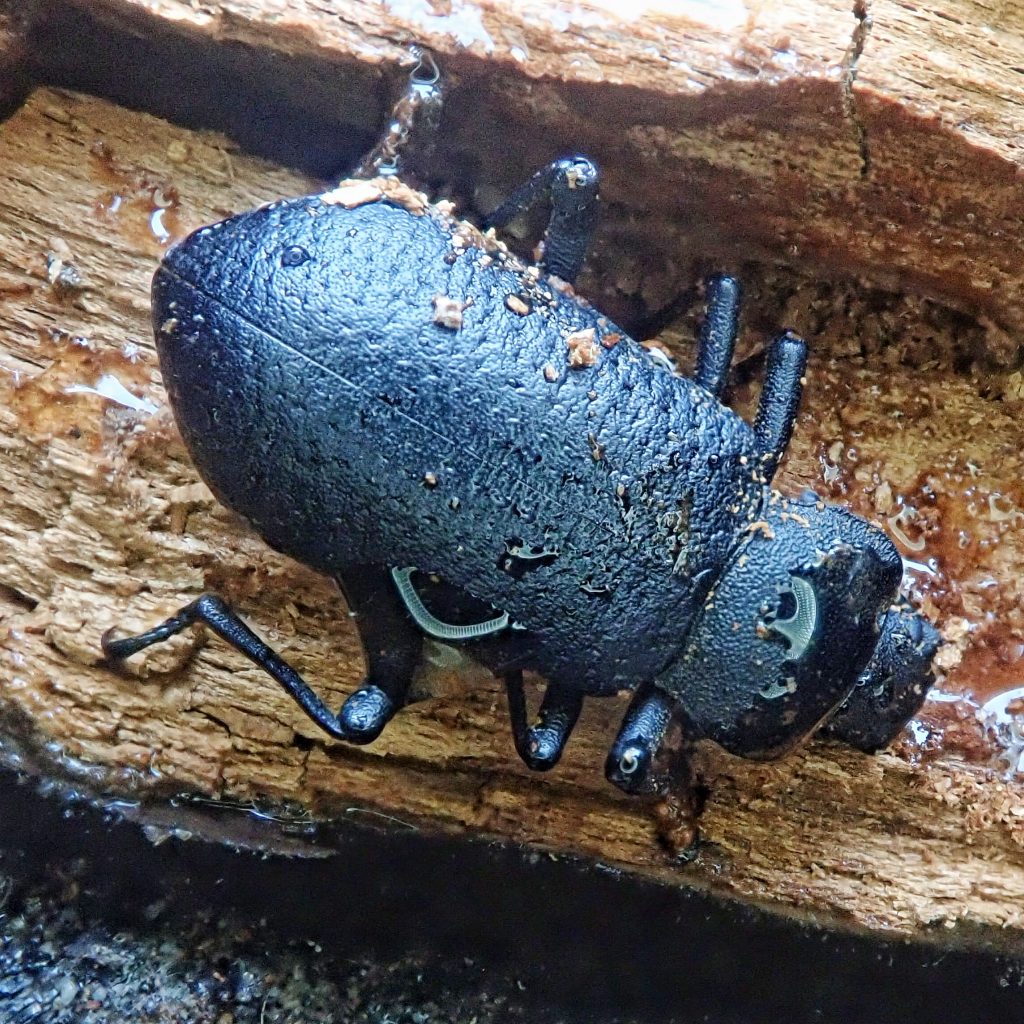
Only recently, because of a burgeoning interest in Myxogastria(slime ‘molds’) and Myriapoda (millipedes and centipedes), have I begun to explore the fascinating worlds to be found within decaying logs, gently prising off slabs of decomposing wood along seams and fault lines to explore their interiors. So it’s not surprising that, before encountering this pair (possibly a larger female and smaller male) within a driftwood log on the bank of the Columbia River, I’d never found these Tenebrionid beetles (subfamily Stenochiinae, tribe Cnodalonini), since Iphthiminus serratus spends virtually its whole life within the fungally infused walls of its home and larder, fueling itself with the fungi that are breaking down the log.
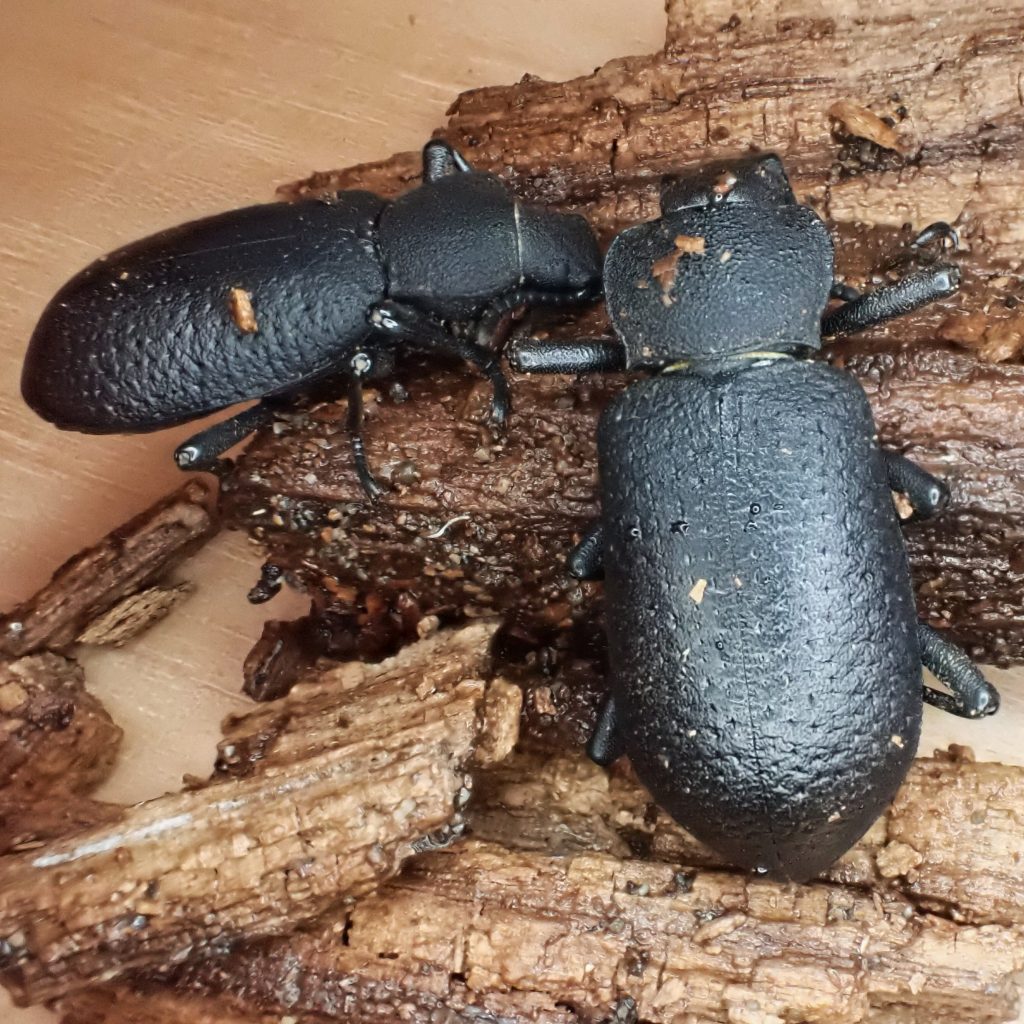
They seem to be a docile and slow moving beetle, but with a great deal of strength, the better to force their way through gaps in the wood. They are built for this, with a wedge shaped head planing into a slightly domed pronotum that has thin lateral margins, and a flattened abdomen. Though they do have wings under the tough elytra, they are somewhat stunted, and this species is very rarely reported in flight. Iphthiminus serratus is not a pretty bug, but they are still beautiful in the same functionally handsome way that a well crafted adze is beautiful.
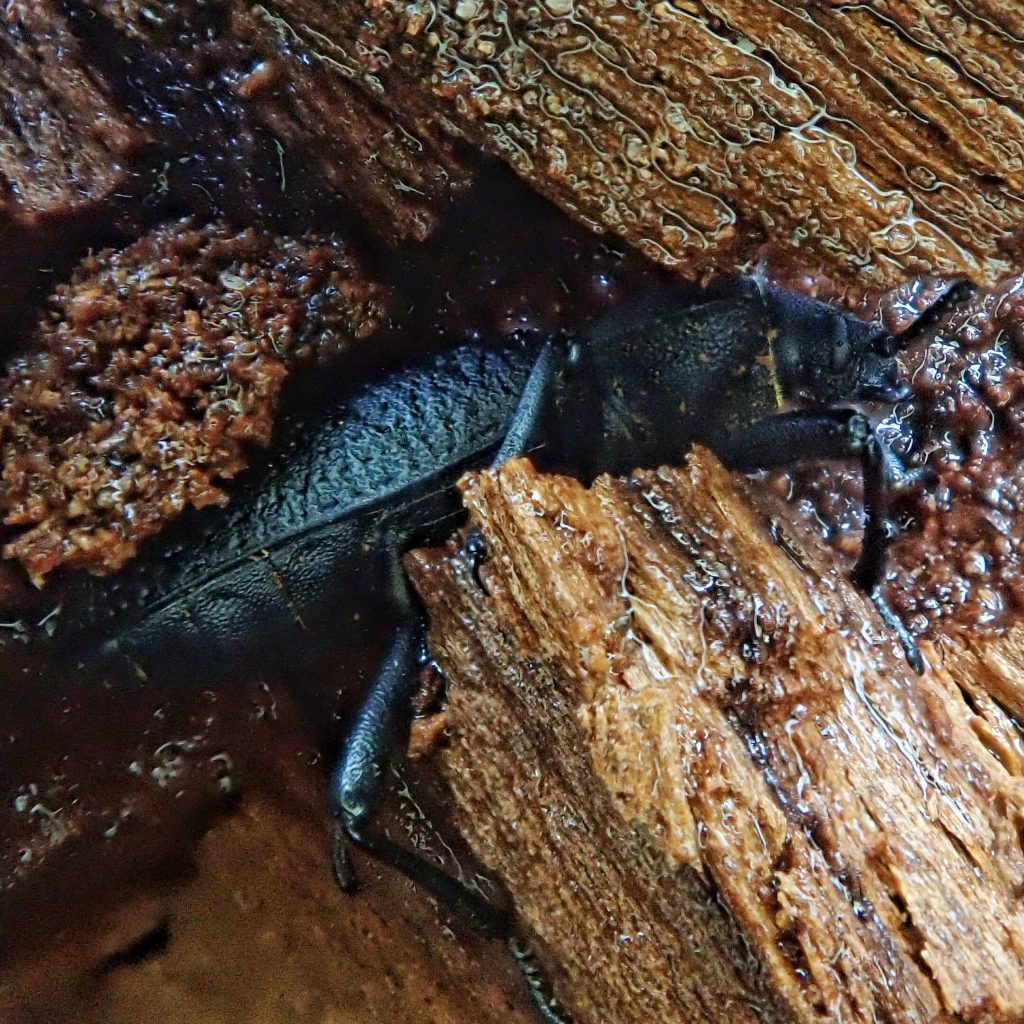
Description-Large (17-25mm long) dull black beetle, with broad shoulders (front corners of the elytra); pronotum flat in front, slightly rounded laterally, with flattened margins, and flaring at the rear into oblique points; elytra with many large punctures; head and pronotum with fine punctures; underside of tarsi with golden setae.
Similar species-Now that Iphthiminus salebrosus and I. sublaevis have been synonymized with I. serratus, it is the only Iphthiminus in our region; Coelocnemis sp. have narrower ‘shoulders’; Eleodes sp. have dark spines on the underside of the tarsi.
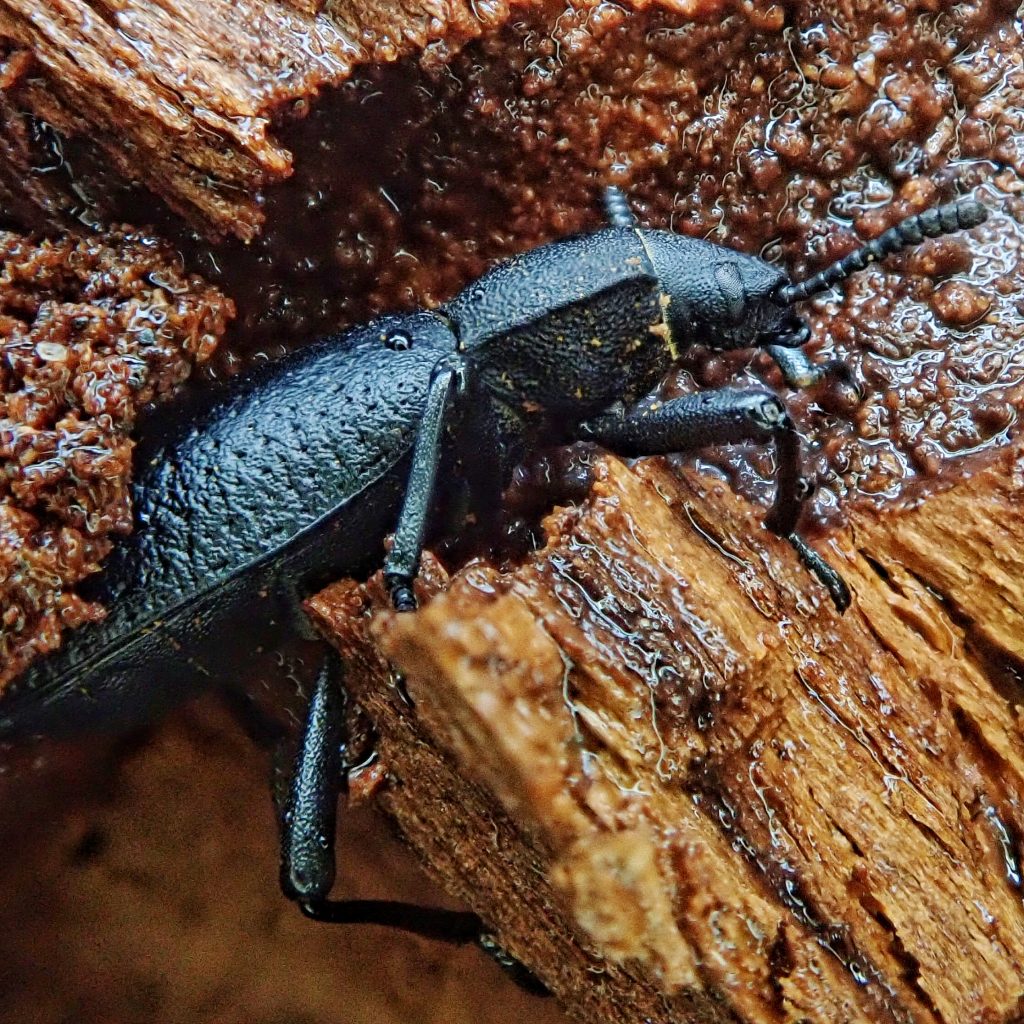
Habitat-Under bark and inside the wood of logs, mostly conifers, that carry white rot fungi.
Range-Western North America; probably region wide in appropriate habitat.
Eats-Fungus, spores, rotting wood.
Eaten by-Larvae possibly parasitized by Encyrtid wasps.
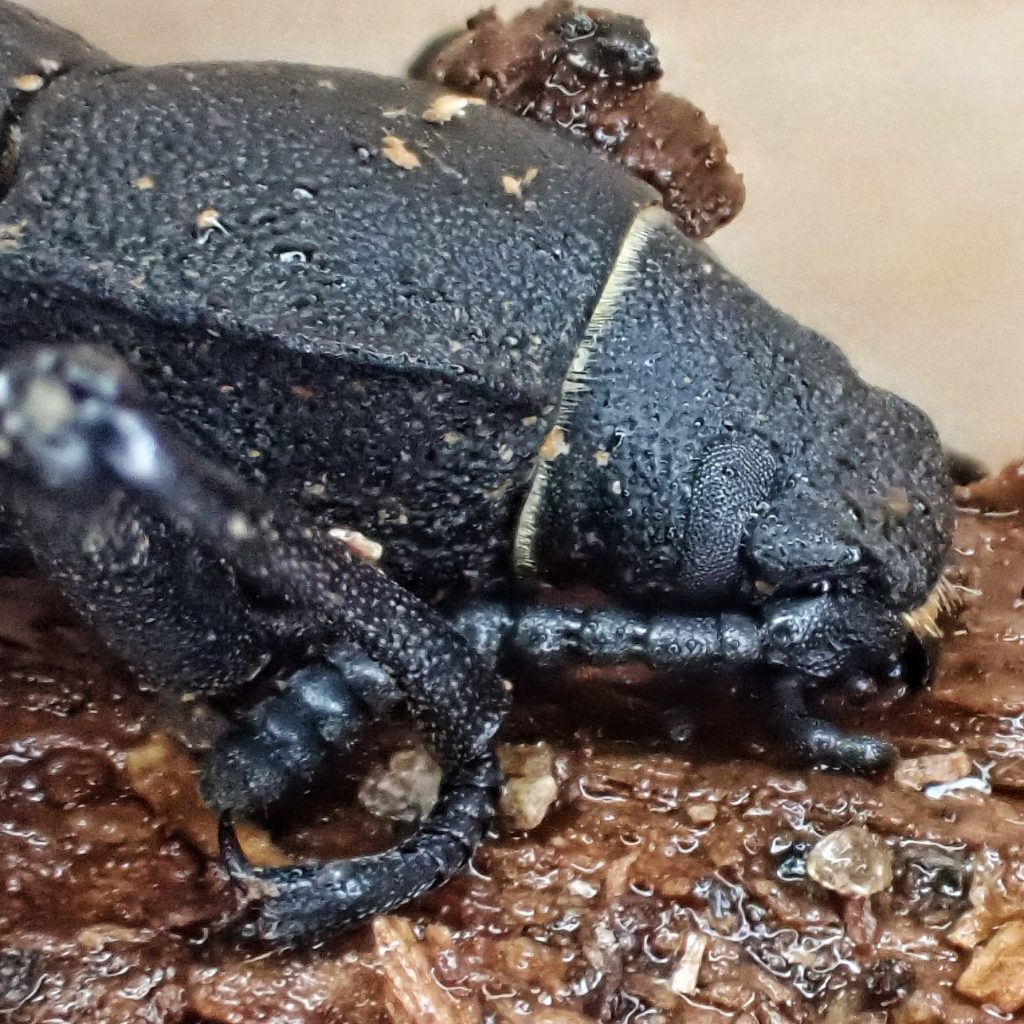
Adults active-Late spring through fall; adults may overwinter within logs.
Life cycle-Eggs are deposited within decaying logs, and it is probable that larvae feed on fungus.
Etymology of names–Iphthiminus is from the Greek for ‘spirited/strong’. The reference is unspecified. The specific epithet serratus is from the Latin for ‘serrated’, and possibly refers to the crenellations of the pronotum.
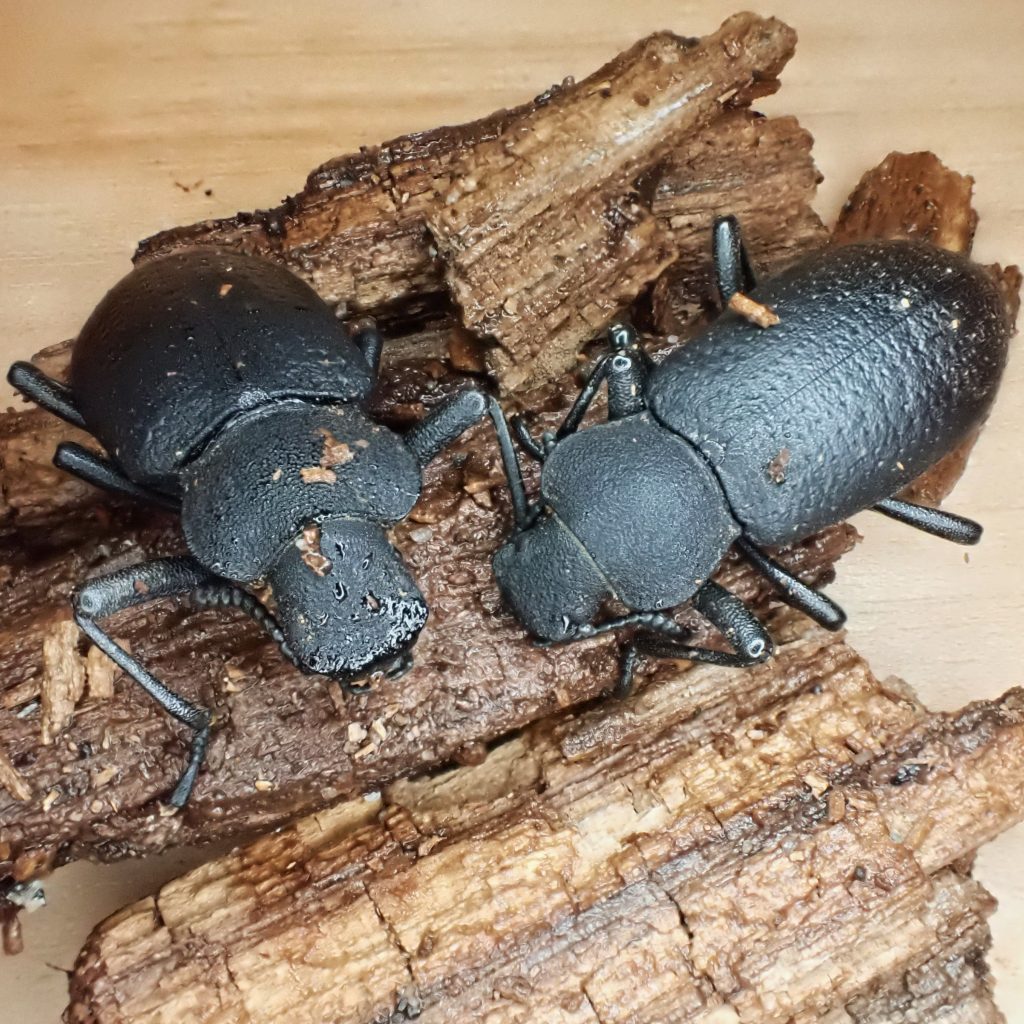
https://en.m.wikipedia.org/wiki/Iphthiminus_serratus
https://bugguide.net/node/view/252465
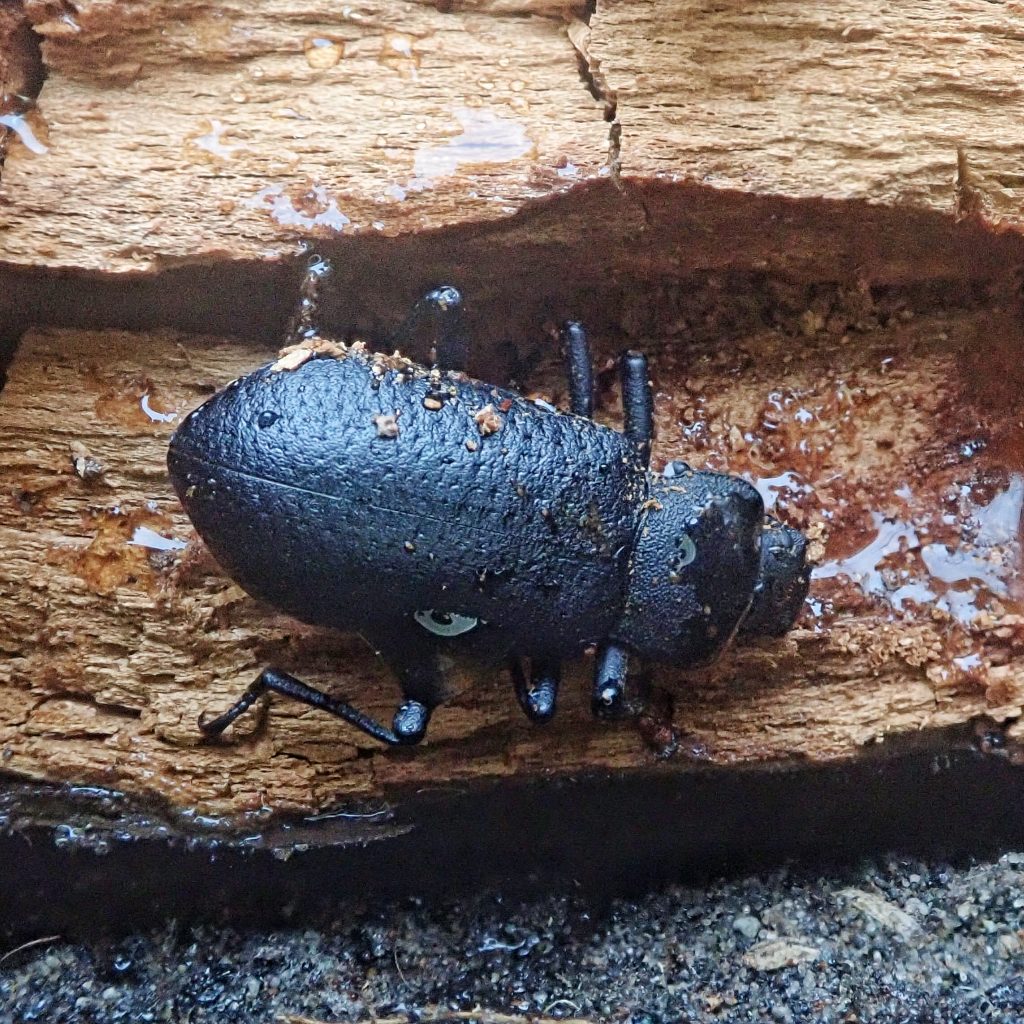
Great write up!
Thank you, Cynthia!
Thanks for the Smiles:):)